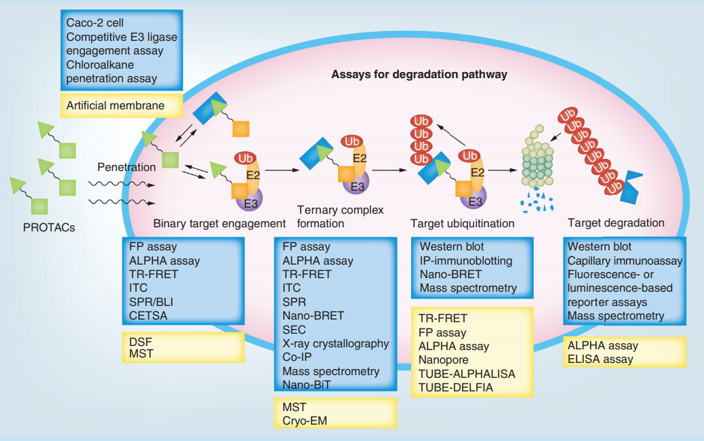A PROTAC molecule is composed of two covalently interconnected ligands, one to target protein and the other to an E3 ubiquitin ligase (E3), with a linker of mostly 5-15 carbon or other atoms. PROTAC can recruit E3 for proximity-induced ubiquitination of target protein, which is then subjected to degradation by endogenous proteasome.
Remarkable advances in targeted proteins therapy based on PROTAC have been accomplished for the past several decades. Unlike chemical inhibitors that may affect cell proliferation, PROTACs can have good absorption, distribution, metabolism, and elimination properties and not necessarily affect function of target protein.
The major challenge for PROTAC is that it is difficult to predict the activities of a PROTAC in different cells types, tissues or species. Thus, enormous in vitro evaluations of chemistry, cell biology, toxicities, dosage and efficacy studies are necessary. As a leading service provider, Profacgen is capable of offering one-stop PROTAC based on comprehensive and stable platform.
 Figure 1. Assays that can be applied for the degradation pathway of proteolysis targeting chimeras degraders
Figure 1. Assays that can be applied for the degradation pathway of proteolysis targeting chimeras degraders
Profacgen promises to work closely with customers, please contact us for more information.
Referencse
Fill out this form and one of our experts will respond to you within one business day.